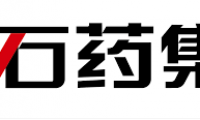-
Reuters
- Source: drugdu
- 107
- February 9, 2024
-
FDA clears painful diabetic neuropathy neurostim therapy from Neuralace
- Source: drugdu
- 82
- February 6, 2024
-
FDA clears stereotactic guidance system from ClearPoint Neuro
- Source: drugdu
- 85
- February 6, 2024
-
Neural Network Recognizes Breast Cancer on Histological Samples With 100% Accuracy
- Source: drugdu
- 87
- February 5, 2024
-
Neuro Biotech Alto Adds $128M in IPO Cash for Biomarker-Based Psych Drugs
- Source: drugdu
- 87
- February 5, 2024
-
CSPC Pharmaceutical Group’s SYS6002’s first human study unveiled at ASCO-GU
- Source: drugdu
- 137
- February 5, 2024
-
【EXPERT Q&A】What are the classifications of pharmaceutical intermediates?
- Source: drugdu
- 140
- February 5, 2024
-
CanSinoBio’s 13-valent Pneumococcal Polysaccharide Conjugate Vaccine (PCV13i) Receives Phase III Clinical Trial Summary Report
- Source: drugdu
- 164
- February 1, 2024
-
【EXPERT Q&A】What documents and certifications are needed, and what are the main processes for exporting pharmaceuticals to Canada?
- Source: drugdu
- 200
- February 1, 2024
your submission has already been received.
OK
Subscribe
Please enter a valid Email address!
Submit
The most relevant industry news & insight will be sent to you every two weeks.












